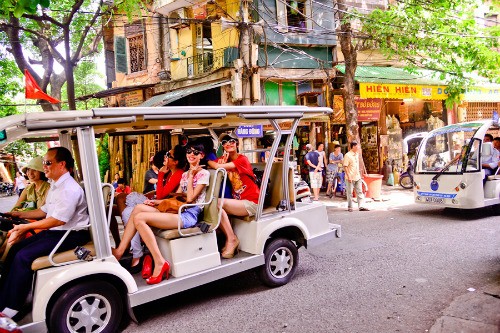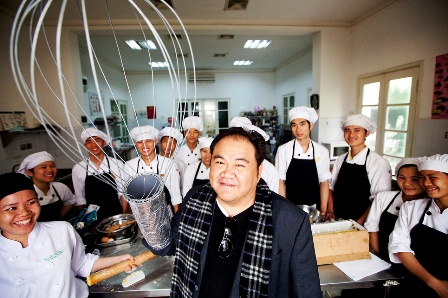Nguyen Hoang Long – ID 13
Author Archives: Hoang long NGUYEN
Deal with challenge – Nguyen Hoang Long

Nguyen Hoang Long – ID 13
MTA – the International Precision Engineering, Machine Tools and Metaworking Exhibition & Conference
Writer of the summary : Nguyen Manh Tung – ID: 17
This article summarizes key points of MTA 2016 and orientations for MTA 2017. MTA is the International Precision Engineering, Machine Tools and Metaworking Exhibition & Conference. In the conference, enterprises exhibited products by many international brands with modern and advanced technologies such as metal cutting and forming machines, metrology, and other supporting systems and tools. There were 177 exhibitors from 19 countries and regions including 4 international group pavilions from Korea, Singapore and Taiwan joining this event. Furthermore, MTA 2016 attracted a huge number of international brands, such as Beijing JingDiao, Emuge, Carl Zeiss, … Lots of domestic organizations participating this event, for example, Bibus Vietnam; Dragon Precision….With the development of technology in terms of precision engineering and manufacturing issues, MTA Hanoi 2017 is planning to focus on concurrent education programs which are innovative community for manufacturers to study, create networks and understand deeply about industry insights and topical debates.

Why it is innovative?
The machinery and equipment are one of the direct elements of the main production process, so the modernization of machinery or technological innovation is very important for each enterprise. An industrial enterprise that wants to survive and grow will need to build a technological innovation plan. Advances in science and technology, innovation in technology will enable the quality of products to create new products, diversify products, increase productivity, increase labor productivity, use rational saving This will increase competitiveness, expand markets, accelerate rapid growth and improve business efficiency. Technology innovation is really the right direction of a potential industrial enterprise. Therefore, MTA is known as an ideal place where businesses present as well as approach the latest technological advances.
Furthermore, It is also a place where customers interact directly with the specialist, where they can meet in the most tangible way. It will be the most efficient bridge for the northern manufacturing industry to seek the supply of machine.
Writer: Nguyen Manh Tung – Number 17
Electric cars – Green Tourism
Writer: Nguyen Manh Tung – ID: 17
Electric cars – Green Tourism
Occurring since July 2010, electric cars are part of the clean transport project in the old quarter of Hanoi, managed by Dong Xuan Joint Stock Company. In the initial stage of development, it can be said that electric cars are very attractive and popular for travelers. There are 500 to 600 tourists per day, even 700 tourists using this service.

The route of operation of the electric car in Hanoi Old Quarter is about 6.5 km, passing through 28 commercial streets, 13 vocational streets, 22 temples, 9 temples, 3 pagodas, 8 historical relics and regional landscapes around area of Hoan Kiem lake and Dong Xuan market.
On the journey, the visitors will be introduced the history of the name of each street and the landscapes of the Hoan Kiem district in two languages (Vietnamese – English) to adapt the need of visitors that is exploring the cultural history, architecture of the old quarter and a part of daily life of the people in Hanoi.
After 7 years of operation, the image of electric cars running around the old quarters have become a popular means of travel with the capital. No smoke like a motorcycle taxi, not as expensive as pedicabs. Furthermore, last year after “The Walking Street” were officially put into service, green electric cars more became useful when other vehicles were not allowed in and out.
So Why this type of vehicles become a trend/innovative idea in Hanoi??
I can tell you “electric cars” is absolutely brilliant idea. Firstly, it is a vehicle running by electric/solar powered cars; it brings no noise, no dust and especially the green image for Hanoi. Therefore, it is considered as a perfect solution for the environment issues that every country now really cares about. Secondly, thanks to the green image of electric cars, it attracts more tourists to visit Hanoi, especially the Old Quarter. In the year of 2017, electric cars were serving nearly 300,000 visitors to Hanoi ancient streets, and the revenue reached over 8.8 billion VNĐ. In addition, when visitors come to the Old Quarter, Hanoi, they will have to chance to see the culture of Hanoi such as architecture, historical relics, silk, food street…So thanks to electric cars, it not only helps promote tourism, economic development but also preserves Hanoi’s signature culture and spreading the unique culture to foreign visitors.

And finally, I really hope that the electric car service will be more and more stable to attract more and more people both Vietnamese and Foreign Visitors, contributing to keeping the peaceful, unique and green image for the old quarter and Hanoi.
Source: http://bnews.vn/tour-tham-quan-pho-co-ha-no-i-bang-xe-dien-hut-khach/51606.html
http://anbico.vn/tin-tuc/xe-dien-du-lich-pho-co-7-nam-nhin-lai/
Writer: Nguyen Manh Tung – Number 17
Changing the lives of poor children – Koto case study
NGUYEN HOANG LONG – ID: 13
Innovative management contributes to changing the lives of poor children in the case of KOTO (Hanoi).
Analysis of the interest of this article for innovation in Hanoi
KOTO is known as one of the strong social enterprises with great influence in Vietnam today. This social enterprise was founded in 1996 by Jimmy Pham in Hanoi. KOTO has become a trusted address for poor and underprivileged children in society, which gives them the opportunity to learn cooking skills to build a solid foundation for the future. KOTO is recognized as one of the first social enterprises to register successfully under the social enterprise registration system, which is registered under the Enterprise Law of Vietnam in 2014. KOTO’s revenue is derived from the profits of two restaurants in Hanoi and Ho Chi Minh City. The profit of this business is devoted to cooking and providing free living services to trainees. In addition, KOTO has established KOTO Vocational Training Center, which is known as one of the non-profit centers with the goal of supporting vocational training for poor children. Specifically, within 24 months, students will learn skills to serve in the field of restaurants and hotels, specialized English and life skills. Moreover, practitioners are also periodically examined for health. KOTO’s trainees are successful in the field of food and they have changed their lives through their hard work and their effort. KOTO’s efforts are aimed at bringing new life to poor children and it will expand other facilities to increase profitability and achieve humanitarian goals in Vietnam.
 Jimmy Pham – KOTO Founder and Global Ambassador and KOTO’s trainees.
Jimmy Pham – KOTO Founder and Global Ambassador and KOTO’s trainees.
Source: http://www.koto.com.au/
Writer: Nguyen Hoang Long – ID: 13
SOCIAL ENTERPRISE IN VIETNAM CONCEPT, CONTEXT AND POLICIES
WRITER of the summary : NGUYEN HOANG LONG – ID: 13
It is not difficult to say that there are many issues related to the definition, context and policies of the government in the analysis of social enterprises in Vietnam. Social enterprise is described as one of the special organizations with business activities associated with social objectives.
(Source: Ms. Pham Kieu Oanh, Social Investment in Viet Nam, 2014)
In particular, the profit source of the business is used to reinvest the community, rather than maximizing profits for shareholders or owners. In this country, there are three important historical periods divided, which includes Before 1986, from 1986 to 2010 and from 2010 to date. Different periods of history have led to the different activities and development of social enterprises. In addition, the authors also focus on the difficulties and challenges of social enterprises to adapt to the development of modern society in Vietnam. Recommendations have also been made to create useful premises and suggestions for the long-term development of social enterprises.
Reference lists:
- Article: https://www.britishcouncil.vn/sites/default/files/social-enterprise-in-vietnam-concept-context-policies.pdf
